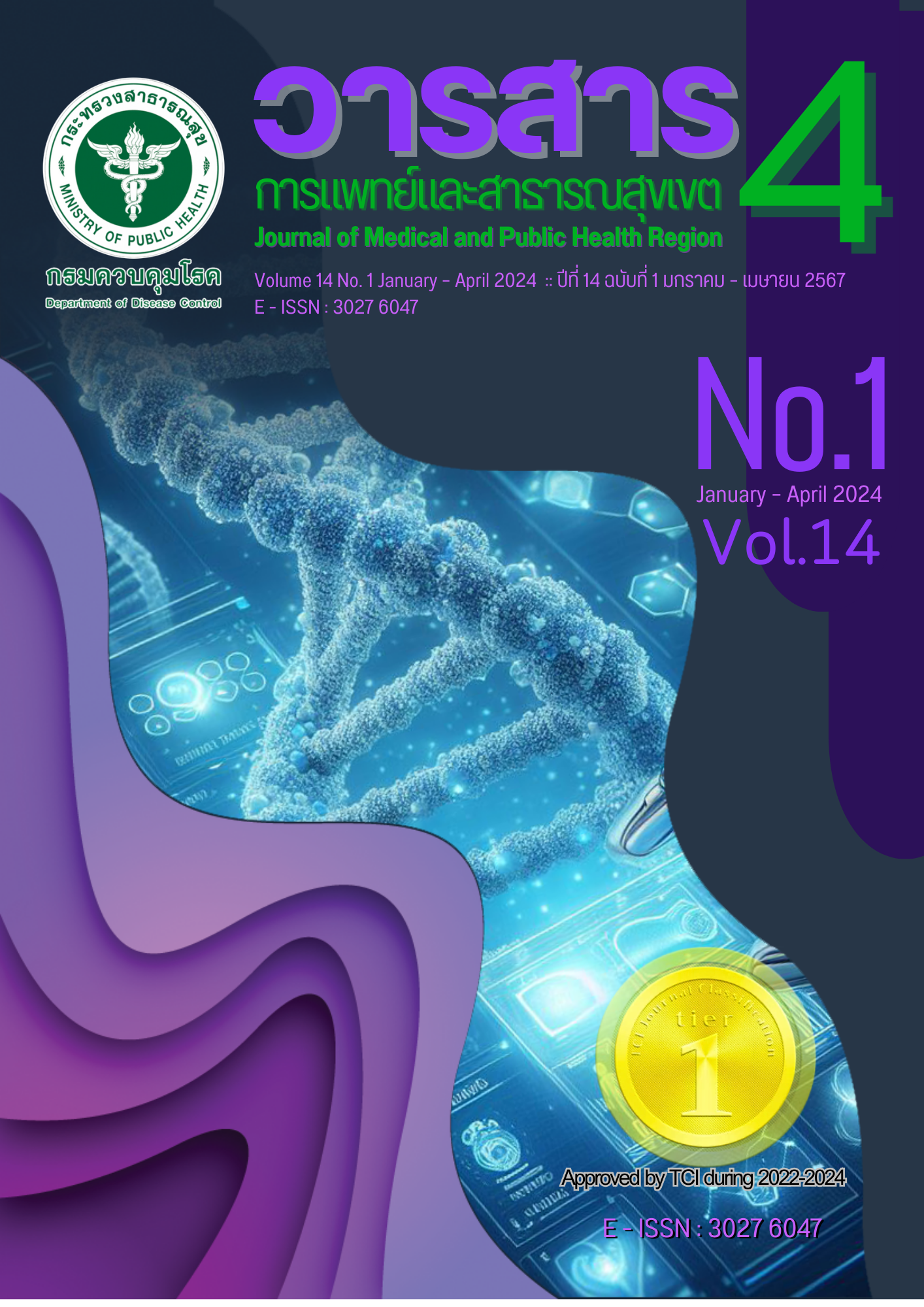The comparison of pulmonary artery size and McGoon ratio from magnetic resonance imaging versus transthoracic echocardiography
Main Article Content
Abstract
Most congenital heart disease patients need advanced cardiac imaging, e.g., Magnetic resonance imaging; MRI,
due to the image quality limitation of basic cardiac imaging modality and international recommendation guidelines. Especially the pulmonary artery size and McGoon ratio value is an important parameter for follow-up and selecting the type of treatment. The usual patient underwent evaluation by transthoracic echocardiography; Echo for basic imaging modality. This study compared the pulmonary artery size and McGoon ratio calculated from both methods. This retrospective study reviewed pulmonic valve size, main pulmonary artery size, left and right branches, abdominal descending aorta, and McGoon ratio calculated from the database in 2010-2021. In 54 studies of congenital heart disease at Ramathibodi Hospital, 4-37 years for age, male 54%, female 46% underwent MRI and Echo within two years (10.7 + 8.2 months). The result showed that
the McGoon ratio, pulmonary valve, and right pulmonary artery were not different between MRI and Echo with moderate to very strong correlation (r=0.55-0.87). The results showed a significant difference in main pulmonary artery size (MRI 21.70 + 5.82, Echo 19.92 + 5.17 mm.) and left pulmonary artery size. (MRI 16.61 + 4.62, Echo 15.10 + 4.01 mm.) (P < 0.05) Echocardiography was an alternative tool for evaluating and following clinical for congenital heart disease.
Article Details

This work is licensed under a Creative Commons Attribution-NonCommercial-NoDerivatives 4.0 International License.
References
Sirichongkolthong B. Correlation between aortic oxygen saturation and pulmonary artery size in cyanotic congenital heart disease with decreased pulmonary blood flow. Rama Med J 2018; 41(3): 21-9.
Siraj N, Ghafoor N, Selim MR, Islam SS, Deepa KP, Ashraf MM. Classic imaging findings of Tetralogy of Fallot with 64-slice multidetector computed tomography. Ibrahim Card. Med. J 2019; 9(1-2): 16-22.
Luo Q, He X, Song Z, Zhang X, Tong Z, Shen J, et al. Preoperative morphological prediction of early reoperation risk after primary repair in tetralogy of Fallot: a contemporary analysis of 83 cases. Pediatr Cardiol. 2021; 42: 1512-25.
Vaujois L, Gorincour G, Alison M, Déry J, Poirier N, Lapierre C. Imaging of postoperative tetralogy of Fallot repair. Diagn Interv Imaging. 2016; 97(5): 549-60.
Broda CR, Shugh SB, Parikh RB, Wang Y, Schlingmann TR, Noel CV. Post-operative assessment of the arterial switch operation: a comparison of magnetic resonance imaging and echocardiography. Pediatr Cardiol. 2018; 39(5): 1036-41.
Greenberg SB, Crisci KL, Koenig P, Robinson B, Anisman P, Russo P. Magnetic resonance imaging compared with echocardiography in the evaluation of pulmonary artery abnormalities in children with tetralogy of Fallot following palliative and corrective surgery. Pediatr. Radiol. 1997; 27(12): 932-5.
Fogel MA, Donofrio MT, Ramaciotti C, Hubbard AM, Weinberg PM. Magnetic resonance and echocardiographic imaging of pulmonary artery size throughout stages of Fontan reconstruction. Circulation.1994; 90(6): 2927-36.
Lopez L, Colan SD, Frommelt PC, Ensing GJ, Kendall K, Younoszai AK, et al. Recommendations for quantification methods during the performance of a pediatric echocardiogram: a report from the Pediatric measurements writing group of the American Society of Echocardiography Pediatric and Congenital Heart Disease Council. J Am Soc Echocardiogr 2010; 23(5): 465-95.
Krupickova S, Muthurangu V, Hughes M, Tann O, Carr M, Christov G, et al. Echocardiographic arterial measurements in complex congenital diseases before bidirectional Glenn: comparison with cardiovascular magnetic resonance imaging. Eur Heart J Cardiovasc Imaging. 2017; 18(3): 332-41.
Tandri H, Calkins H, Nasir K, Bomma C, Castillo E, Rutberg J, et al. Magnetic resonance imaging findings in patients meeting task force criteria for arrhythmogenic right ventricular dysplasia. J. Cardiovasc. Electrophysiol. 2003; 14(5): 476-82.
Srinivas B, Patnaik A, Rao D. Gadolinium-enhanced three-dimensional magnetic resonance angiographic assessment of the pulmonary artery anatomy in cyanotic congenital heart disease with pulmonary stenosis or atresia: comparison with cineangiography. Pediatr Cardiol. 2011; 32(6): 737-42.
Valsangiacomo Buechel ER, Mertens LL. Imaging the right heart: the use of integrated multimodality imaging. Eur Heart J. 2012; 33(8): 949-60.
Beck L, Mohamed AA, Strugnell WE, Bartlett H, Rodriguez V, Hamilton-Craig C, et al.MRI measurements of the thoracic aorta and pulmonary artery. J Med Imaging Radiat Oncol. 2018; 62(1): 64-71.
Burchill LJ, Huang J, Tretter JT, Khan AM, Crean AM, Veldtman GR, et al. Noninvasive imaging in adult congenital heart disease. Circulation. 2017; 120(6): 995-1014.


